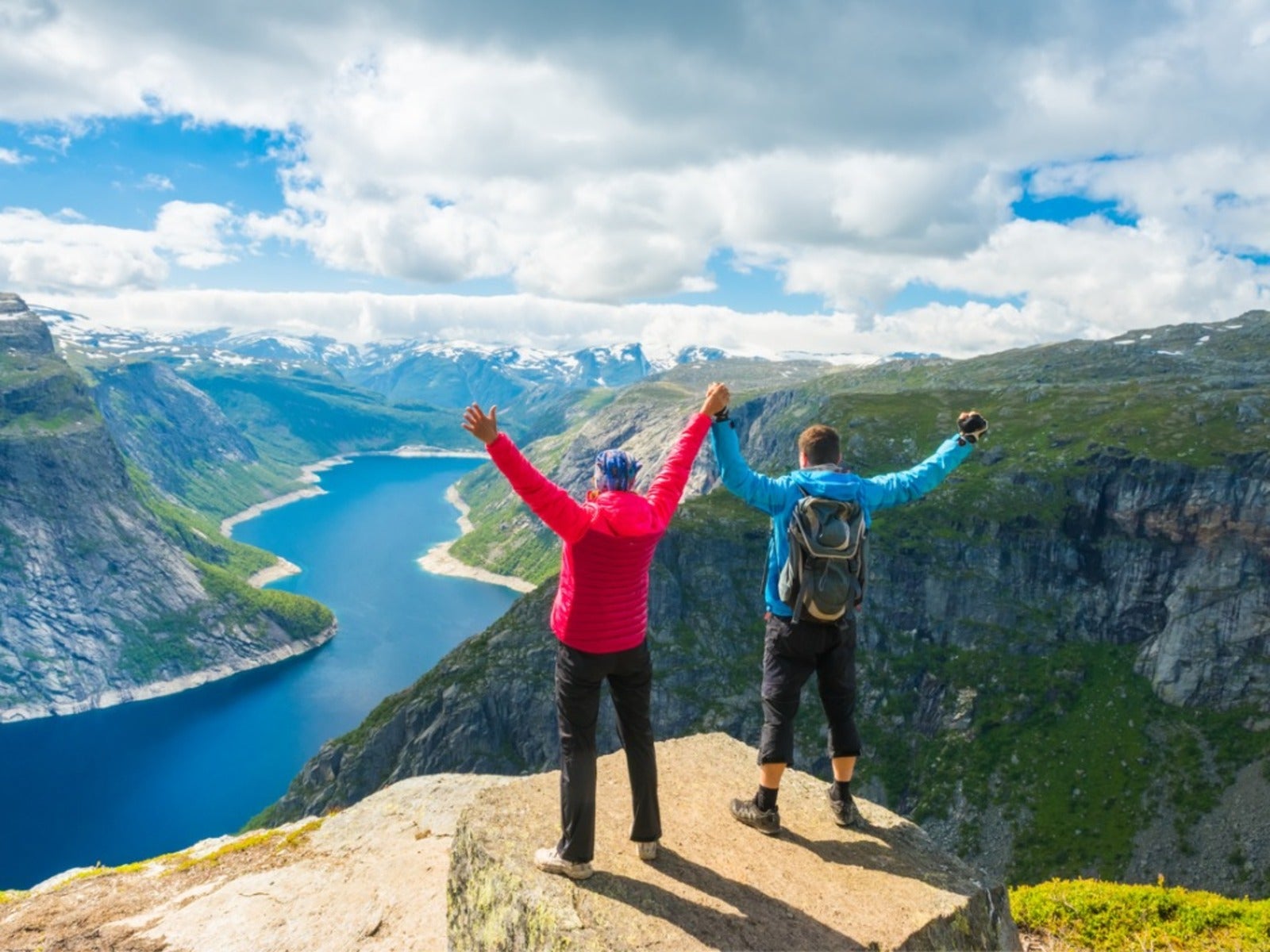Friluftsliv: How To Try The Norwegian Outdoor Lifestyle


Friluftsliv is a Norwegian concept. What is friluftsliv? The term means open-air living. Walking, cross-country skiing, hiking, fishing or just getting out into nature, all these and other in-the-wild adventures are included in the friluftsliv definition in Norway, but it is not limited to Norwegians. Might friluftsliv be something you could benefit from? Read on to learn more.
What Is Friluftsliv?
Friluftsliv - pronounced free-loofts-liv - involves making it a practice to incorporate nature into one's daily life. This is taught to children at a young age and is a guiding life principle in Norway. It has deep roots in the country’s heritage.
The friluftsliv meaning can be expressed in a variety of ways. Some Norwegians describe it as making a commitment to enjoying time outdoors every day or at least very frequently. It doesn’t matter if the sun is out, if it’s raining, or if the snow is falling, those taking friluftsliv seriously don’t hesitate to have outdoor adventures.
Origins of Friluftsliv
Although the idea of celebrating regular time outdoors has been part of Norway for much longer, the actual expression of friluftsliv moved into Norwegian vocabularies thanks to poet and playwright Henrik Ibsen. His poem “On the Heights'' was written in 1859. It told the story of how one man’s 12 month hike through the wilderness made him decide to never return to civilization. The man discovered that his spiritual and physical well being depended on time passed in nature.
Today, friluftsliv is a basic ingredient of Scandinavian lives. But it doesn’t mandate a one-year trek across wilderness. Rather, it has come to mean deciding to spend time in nature for purely recreational purposes.
Benefits of Friluftsliv
Friluftsliv is reputed to make people happier, and the high ranking Scandinavian countries and cities on the “happiest” lists suggest that this is true. It’s no secret in the world in general that passing time in nature makes people happy. Studies show that even investing two hours per week in activities in nature can increase a person’s sense of well-being.
But elevating one’s mood is just the beginning of friluftsliv benefits. This practice is known to assist those suffering from grief to heal, and also with post-traumatic stress disorder and depression.
Sign up for the Gardening Know How newsletter today and receive a free copy of our e-book "How to Grow Delicious Tomatoes".
How to Start Friluftsliving
Ready to give friluftsliving a try? Here’s how to start.
Get Outdoors (No Matter the Weather)
The basic way to start friluftsliving is to go outside. Not just today, but several times a week. In order to build the habit of celebrating in nature, it’s important at first to set aside time to spend in the wild and keep that commitment to yourself. Don’t let rain, sleet or snow hold you back unless there are safety concerns. Norwegians get out in any type of weather; it’s just a question of dressing appropriately in order to stay warm and dry.
Connect with Nature (and People)
Although tobogganing and month-long treks are exciting adventures, you don’t have to start out with the extraordinary and novel. Anything that connects you to nature and gets you outside is enough, especially just when you are beginning to engage in friluftsliving. Picking apples, gardening, or even relaxing beside a lake with do. If you can include other people in the plan, all the better.
Relax and Enjoy
So start small. Select a fun outdoor activity, invite a friend, then relax and enjoy. You can always work up to longer, more adventurous recreation in nature.

Teo Spengler is a master gardener and a docent at the San Francisco Botanical Garden, where she hosts public tours. She has studied horticulture and written about nature, trees, plants, and gardening for more than two decades, following a career as an attorney and legal writer. Her extended family includes some 30 houseplants and hundreds of outdoor plants, including 250 trees, which are her main passion. Spengler currently splits her life between San Francisco and the French Basque Country, though she was raised in Alaska, giving her experience of gardening in a range of climates.